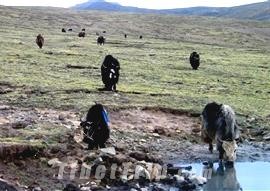
Lhasa, as the capital of Tibet, is showcased in its dense cultural and spiritual atmosphere. It is usually the first window through which travelers discover Tibet. The grand Potala Palace on the Red Hill, the Jokhang Temple, the three greatest monasteries of Gelugpa - Drepung, Ganden and Sera, and the Tibetan Museum are always popular tourist destinations. Shigatse, the second largest city of Tibet, features the most complete natural sceneries. In this region lift Mt. Everest, the highest peak in the world, and other 4 peaks above 8,000 m. (26,247 ft.) as well as 38 peaks above 7,000 m. (22,966 ft.), earning it the laudatory title of 'The Third Pole of the World' and with a magnetic effect on mountaineers. The natural reserve here is also to the habitat of many rare plants and wild animals. Other popular tourist sites include Zhangmu Town, which is a noisy port bordering Nepal, and the Tashilhunpo Monastery, which is the throne of Panchen Lama.

Shannan, the cradle of the ancient civilization of Tibet, is the place of origin of the Tibetan legendary ancestors–a Raksasi and a monkey. The first temple of Tibet, Samye Monastery , Graveyard of Tibetan Kings, sacred Yamdrok Yumtso Lake and Lhamo Lhatso Lake, attract a continuous stream of visitors who come to appreciate or pay tribute. Nyingchi, located in the low southeast of Tibet, is a beautiful region with a mild climate. The natural sceneries include the Great Canyon of the Yarlung Tsangpo River, Bayi Town, Huge Cypress Nature Reserve, Mt. Bon-ri and its fascinating cliff sculptures. Ngari, known as 'Roof of the Roof of the World', features Mt. Kailash and Lake Manasarovar, also known as the sacred mountain and the holy lake, which are prime destinations for pilgrims of Bon, Buddhism and Hindus. Nakchu, situated in the amazing northern plateau, is the seedbed of the early cultures of ancient Shengshong Kingdom and Bon. The traditional Kham Region Chamdo is located in the east rich land and boasts Karub Ruins of Neolithic Age, some monasteries, mountains, lakes, hot springs and other natural wonders.








